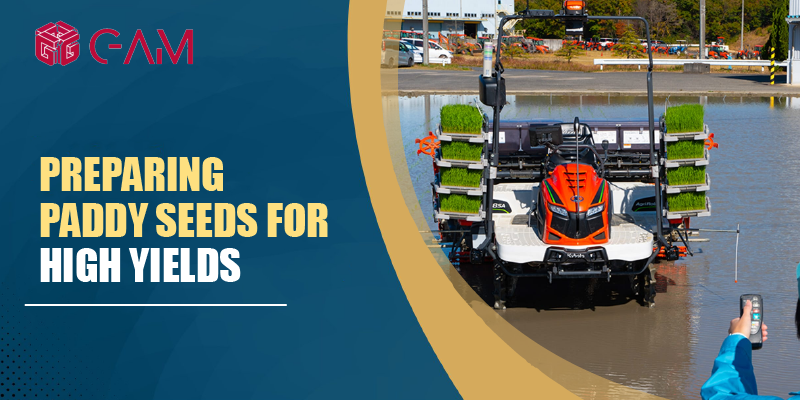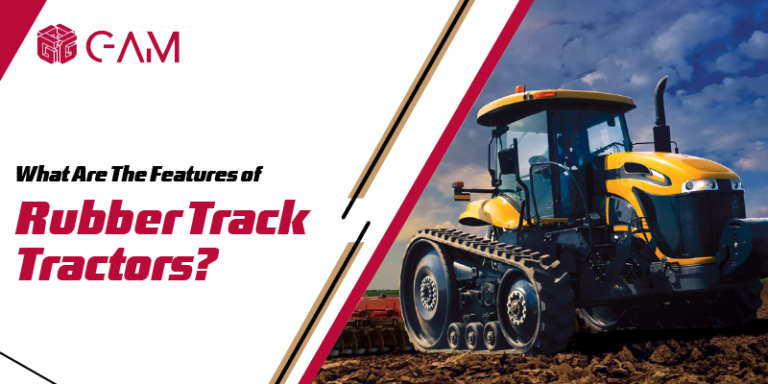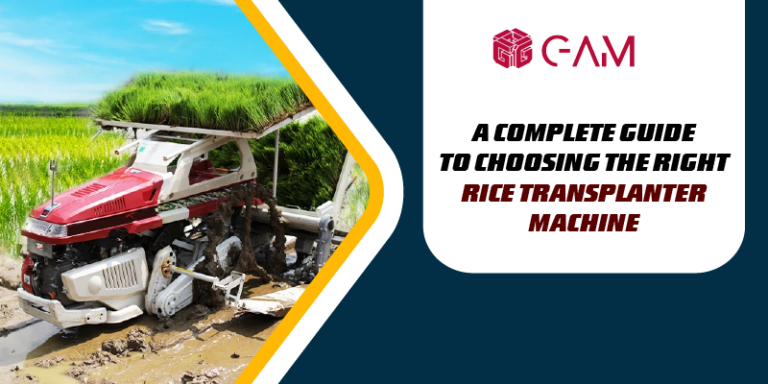The use of machinery in modern agriculture has drastically changed crop production by simplifying and automating previously labor-intensive tasks. The rice transplanter machine is one such invention that greatly simplifies the transplanting procedure. However, this technology will only work if the paddy seed is well prepared.
What Is A Rice Transplanter Machine?
A rice transplanter is a piece of agricultural machinery specifically engineered to sow young rice seeds into paddy fields. It increases efficiency, guarantees uniform planting, and ultimately boosts yield by automating the labor-intensive procedure. It offers many benefits, including
- Lowering the demand for expensive and scarce physical labor.
- Boosting growth and harvests by maintaining uniform spacing and depth.
- Increasing transplanting speed and allowing farmers to cover more ground faster.
- While the rice transplanter machine price may be high, it cuts labor costs and improves yield, making it a profitable investment.
Getting Paddy Seeds Ready for Transplanting
To guarantee a successful transplant and growth of the rice plants, it is important to prepare the seeds properly. Following these steps will ensure that your paddy seeds are ready to be transplanted using a rice transplanter:
1. Choosing The Right Seeds
The first step is to choose premium seeds. You can do this by:
- Consider the high-yielding variety of seeds.
- Choose disease-resistant rice seeds to reduce crop loss.
- Check the weather and soil conditions in your area while choosing a variety.
2. Treating The Seed
If you want to keep pests and illnesses at bay, you must treat the seeds before planting them. Some common methods for doing so are:
- Soak seeds in 52-54°C water to eliminate germs for 10-15 minutes.
- Apply fungicides and insecticides to seeds.
3. Soak The Seeds
To ensure even germination, soak the seeds in water to loosen their seed coat in the following way:
- Allow the seeds to soak for at least a day or two before planting.
- Ensure that there is enough oxygen in the water for the seeds.
4. Before Planting
For consistent and speedy growth after transplanting, pre-germinating the seeds is a must. Follow these steps:
- Remove the excess water and place the seeds in a warm, damp place to germinate for at least a day, preferably longer.
- Keep an eye on the seeds to ensure they don’t get too wet or dry.
Preparing The Nursery Bed For Paddy
There are many approaches available to prepare a paddy nursery bed, and a wet nursery is one option. Each plot is 2.5 meters broad and has 30 cm-wide channels surrounding the seedbeds. The length of the seedbed might vary depending on the soil and the slope of the land.
The nursery must have an adequate water supply and good drainage. The nursery should be dry-ploughed twice and given one ton of FYM. Flush the nursery and re-plow it. For the next two days, the water should remain still. The next step is to puddle the field.
Spread 5 to 10 centimeters of standing water across the fields. The tool used for puddling is an iron puddler. If you want water to soak into the soil more quickly, puddle the fields in different directions. Modern, nontraditional approaches to preparing paddy nursery beds include the Dapog, Mat, and dry nursery techniques.
Transplanting The Paddy
When the seedlings are mature, which usually takes about 20 to 30 days, you can transplant them!
1. Get The Field Ready
- Make sure the field is flat so the water can be evenly distributed.
- Keep the water level at 2-3 cm so the transplanter can work, and the seedlings can take root.
2. Machine Preparation
Investing in a rice transplanter odisha can make the process much simpler.
- Adjust it so you can plant at the right depth and with the proper spacing.
- Grease all the moving parts to keep everything running smoothly and avoid malfunctions.
3. Load The Seedlings
- Fill the transplanter with the seedling trays. Check that the seedlings are all the same size and in good health.
- For effective and easy transplanting, make sure the trays are properly aligned.
4. Procedure For Transplantation
- Drive the rice transplanter straight across the field, keeping the speed and direction constant.
- Check the transplanting depth and spacing regularly and modify the machine settings as necessary.
- Avoid disruptions by checking the seedling trays and refilling them as needed.
Conclusion
A rice transplanter machine can make a paddy field far more productive, efficient, and cost-effective. However, careful seed preparation and nursery management are key to this technology’s success. Taking the time to care for your seedlings well can guarantee an excellent rice harvest.
Introducing Godabari Agro Machinery and Services‘s rice transplanter—the game-changer that will end the expensive, time-consuming, and labor-intensive rice transplantation process. By automating once labor-intensive processes, this equipment saves money and time. Get in touch to buy now.




